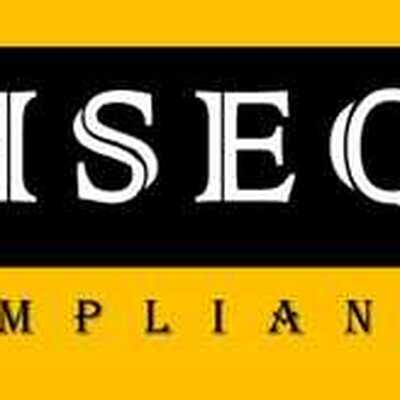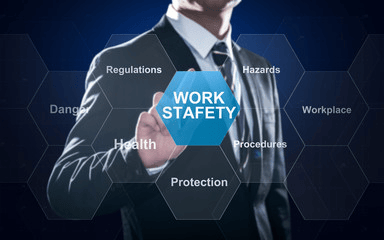Notifications
ALL BUSINESS
COMIDA
DIRECTORIES
ENTERTAINMENT
FINER THINGS
HEALTH
MARKETPLACE
MEMBER's ONLY
MONEY MATTER$
MOTIVATIONAL
NEWS & WEATHER
TECHNOLOGIA
TV NETWORKS
VIDEOS
VOTE USA 2026/2028
INVESTOR RELATIONS
COMING 2026 / 2027
ALL BUSINESS
COMIDA
DIRECTORIES
ENTERTAINMENT
FINER THINGS
HEALTH
MARKETPLACE
MEMBER's ONLY
MONEY MATTER$
MOTIVATIONAL
NEWS & WEATHER
TECHNOLOGIA
TV NETWORKS
VIDEOS
VOTE USA 2026/2028
INVESTOR RELATIONS
COMING 2026 / 2027
About Me
 HSEQ Compliance
HSEQ Compliance HSEQ Compliance is an Australian owned and managed, Health, Safety, Environmental and Quality (HSEQ) consulting firm, providing integrated online compliance solutions to businesses throughout Australia and beyond. Our team of highly qualified and experienced HSEQ consultants provide our clients with simple yet comprehensive integrated risk management systems that foster higher stakeholder engagement, and improve legal compliance.
 HSEQ Compliance -
September 21, 2024 -
Health -
whs safety consultants
-
166 views -
0 Comments -
0 Likes -
0 Reviews
HSEQ Compliance -
September 21, 2024 -
Health -
whs safety consultants
-
166 views -
0 Comments -
0 Likes -
0 Reviews

Implementing an effective Work Health and Safety (WHS) system is vital for any organization committed to protecting its employees and fostering a safe work environment. While policies lay the foundation, translating those policies into everyday practice is where the real challenge—and opportunity—lies. Here’s how to enhance your WHS system from the ground up.
Before any WHS system can be effective, it’s essential to identify potential hazards in the workplace. Conducting a thorough risk assessment helps pinpoint areas that require immediate attention. This involves evaluating the workspace, equipment, and work processes. Engage employees in this process, as they often have firsthand knowledge of the risks involved in their daily tasks.
Once risks are identified, develop clear WHS policies that outline safety procedures, responsibilities, and protocols. Ensure these documents are easy to understand and accessible to all employees. Use simple language and avoid jargon, making it easier for everyone to comprehend their role in maintaining a safe workplace. Regularly review and update these policies to reflect any changes in the work environment or regulations.
Training is critical to bridging the gap between policy and practice. Offer comprehensive training sessions that not only cover the WHS policies but also focus on practical applications. Use real-life scenarios and hands-on demonstrations to reinforce learning. Tailor training programs to different job roles, ensuring all employees understand specific hazards related to their tasks.
Creating a culture of open communication is vital for an effective WHS system. Encourage employees to voice concerns and report incidents without fear of repercussions. Implement regular safety meetings and feedback sessions to discuss WHS issues and gather input from staff. This open dialogue not only promotes transparency but also empowers employees to take ownership of workplace safety.
Regular audits and inspections are crucial for maintaining WHS standards. Conduct routine checks to ensure compliance with safety policies and identify any new hazards. Use checklists to standardize these inspections, making it easier to track findings and improvements over time. Involve employees in this process to encourage accountability and to instill a sense of shared responsibility.
Utilizing technology can greatly enhance your WHS system. Consider using software tools for tracking incidents, managing training schedules, and analyzing safety data. Digital platforms can also facilitate communication and reporting, making it easier for employees to share safety concerns. Embracing technology can streamline processes and improve overall efficiency in managing workplace safety.
Recognizing and celebrating safety achievements can reinforce positive behaviors and foster a culture of safety. Acknowledge teams or individuals who exemplify safety practices or achieve significant milestones in WHS compliance. This not only motivates employees but also underscores the importance of prioritizing health and safety in the workplace.
Enhancing your WHS system is an ongoing journey that requires commitment, adaptability, and collaboration. By focusing on risk assessment, clear policies, effective training, communication, audits, technology, and recognition, organizations can move from mere compliance to cultivating a genuinely safe and healthy workplace. Remember, a proactive approach to WHS not only protects employees but also contributes to the overall success and productivity of your organization. Prioritize safety today for a brighter, healthier tomorrow.